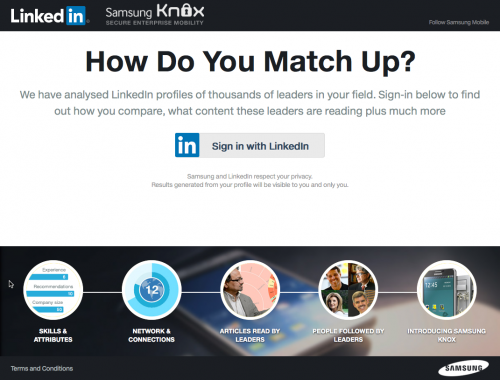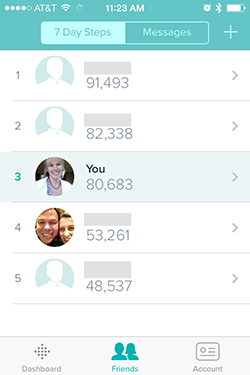In her keynote @ThingsExpo in New York this month, Cisco’s VP of Cisco Consulting Services, Manjula Talreja, discussed IoE and the enormous opportunities it provides to public and private firms alike.
“It’s as if the world is going to re-boot … the world becomes hyper-aware … and insight is today’s currency.” Joseph Bradley, Cisco.
Whether you use Gartner’s definition of the Internet of Everything: “The Nexus of Forces; ” or Cisco’s definition: “Internet of Everything;” or IDC’s definition: “The Third Platform;” or GE’s definition: “The Industrial Internet,” it’s all about social, mobile, video, data analytics, security and cloud coming together.
- In 2012, we created more data than in the previous 5,000 years.
- By 2020, we will have 50 billion objects connected to the Internet.
- In 2014, 77 billion apps were downloaded.
Yes, it’s fearfully big. And it’s moving fearfully fast.
Ms Talreja counseled the largely retail and financial audience to think about the higher order business problems that can be solved across three critical vectors:
- Machine to machine (homes, cars, things connected to the cloud)
- Person to person (remote communication and collaboration enabled by the cloud), and
- Machine to person (the new opportunities that happen when things — like your FitBit or your Smartphone — are connected to a person)
In all this, context is king.
Amazon knows a dramatically large amount of things about me and my changing lifestyle and shopping habits since I became a customer in November 1999, when my first triumphant purchase was a hardback copy of Galileo’s Daughter: A Historical Memoir of Science, Faith, and Love by Dava Sobel. (Yes, I went back and looked.)
And the way Amazon creates value from that knowledge is by applying the following four pillars to that knowledge:
- Process
- People
- Data, and
- Things
So what does this mean? Ms Talreja says that the biggest change for most companies (and Amazon has already figured this out) is in people and process. And to become innovative, and to capture value, companies must be hyper aware, predictive and agile.
“All companies that are capturing value right now from IoE have to hyper aware, predictive and agile.” Mangle Talreja, Cisco.
What’s hyper aware? Knowing in real time what is going on.
What’s predictive? By optimizing assets, data and operations based on what’s going on now, and what’s going to happen next, not by just looking back. We cannot any longer only collect all the data in one place, in a central location, and look at it historically. Today, it’s about having data available in real time. Data analysis has to be predictive of the future, not just look back at trends.
What’s agile? Ms Talreja says it’s by being quick. I take issue with that description though. Agile is often confused with quick. Agile is nimble. It’s a different thing, IMO.
But I agree that for companies to capture value right now for IoE, they have to be hyper aware, predictive and agile, because that’s how innovation accelerates a company’s competitiveness.
Particularly when it come to being agile. Ms Talreja cautions us that when traditional top-down hierarchy of burdens decision making, it’s hard to be agile. Companies need to unbundle traditional teaming structures, and facilitate access to the experts that can make it happen. And that may not be in a centralized HQ. For example, in the retail use case, it’s about knowing what stock is on the shelves right now, and when it’s getting below 25%. Retailers need to know it the moment it happens. Not 20 days after it happened.
Shining a light on ‘dark’ assets
A term I particularly liked in this keynote was the concept of ‘dark assets’ and the opportunity to shine a light on those assets. What are dark assets? They are assets — and through them market opportunities — that are under- or un-utilized. They might not be physical things, as we might understand the traditional meaning of the word to be. They are instead contextual moments and consumer behaviors that become the catalyst for business opportunities.
Financial use cases for lighting up dark assets
For example, only the world’s very richest people — 0.5% — have real time access on the phone, or in person, to a financial expert to help them adjust financial portfolios. The rest of us have to ‘make do’ with online access and going into high street banks. That’s a dark asset — people without access. WealthFront is shining a light on that asset.
Another example: Acorn — a company I hadn’t heard of. Using Acorn, you can ’round up’ a $5.05 purchase at a coffee shop, and put the $0.95 into an investment pot. Once that pot reaches $5, Acorn will start investing it for you. The dark asset here is the coins and change we carry around and occasionally (as I do) take to Coinstar a couple of times a year. Because who can deal with paper coin tubes? Not me.
Cisco referred to more than 60 vertical use cases they had built for IoE, and surveys conducted to highlight those vertical use cases. They conducted surveys with regular folks over multiple national geographies about their financial habits. 75% of those surveyed said they would move financial institutions if some of the typical friction was removed — the kinds of friction described in the examples above.
For example: what if you went into your bank, and it knew, from your phone or your face, who you were. You got a push notification to your phone to tell you that there was a seven minute wait to see a teller, and then gave you a $5 coupon to get a coffee around the corner at Starbucks while you waited. Bloomingdales in Silicon Valley does this. Personally, I’d expect that from Bloomingdales, but my natural cynicism would question why a bank would want to buy me a cup of coffee. I’d rather hope they save the money and give me a better deal on my banking. But hey ho. Point taken.
Another example: what if you conducted a FaceTime chat with a mortgage advisor. Then, when you went into the physical location, the bank used location-aware branch recognition, to continue the discussion, so you didn’t have to repeat the entire conversation? Now that I could get behind. The idea of applying for a mortgage, or re-mortgage, is daunting in the extreme. All that paperwork. I’ve done it. More than once. And it’s a miserable, friction-filled experience.
Cisco estimated that by removing friction and lighting up some of these financial ‘dark assets,’ a $10B financial institution could generate $392M of growth, even accounting for implementation costs.
Retail use cases for lighting up dark assets
In the retail world, Google is beginning to know as much about you and your shopping habits as Amazon. With their driverless cars, and/or drones, they’ll come to know what you want to eat, and when. They can be predictive. Safeway isn’t predictive. At all. Even though I use a Safeway Club card, and presumably Safeway captures my whole shopping history, they don’t know when I walk in the door of Safeway and don’t change behaviors as a result. They can’t predict that the things I buy aren’t on the shelves. If big box stores can predict — from car traffic patterns, from location aware devices, from tags on shopping carts, from video cameras — how shopping changes in real time and accommodate those changes accordingly, it can rack up big savings. A store can move staff from the back warehouse to the front to avoid queues.
Using some proprietary technology that Cisco has built in combination with big box retailers (they didn’t say who), they have combined, and patented, video cameras with video analytics to send a very specific alarm when a particular item is running low in stock. Typically these kinds of alerts have been very imprecise, and ‘stock out’ is big business. It can have an 8-12% impact on the bottom line, so retailers care very much about it. Being hyper aware in real time of stock out means money.
Another example in the retail store environment: Cisco is also working on tablets that help associates alert when a line is getting long much faster than relying on a supervisor’s line of sight and a tannoy system.
In both these use cases, Cisco showed that the big box retailer they worked with got a revenue increase of $98M, and a reduction cost of labor of $94M. No indication of which retailer, over which time, and for which number of stores. But the savings were real.
Similarly, she spoke of a ‘global coffee house chain’ — is there more than one? — that is using video and video analytics to understand their ‘balk rate.’ This is the rate at which customers enter a queue, over the rate at which they leave a queue. This chain wants to know when, why, and what demographics come and go — which gender? which age group? how long they stay? Knowing this information can help predict how to solve the problem.
Overall, an interesting talk, which though it lacked real hard core specific data, for obvious reasons, underscored the massive sea-change we are going to witness with how companies and brands interact with us as consumers. (And the consequent privacy questions raised.)
I will be better served, more understood, prodded, peered at, offered all kinds of things I want but don’t need in the coming years. Will I be a happier customer? I hope it will result in a better experience than I get today with the bludgeoning I feel from blunt instruments of spam emails and re-marketing ads. But the knife-edge of privacy and personalization is going to be a serious challenge for businesses to balance upon.



